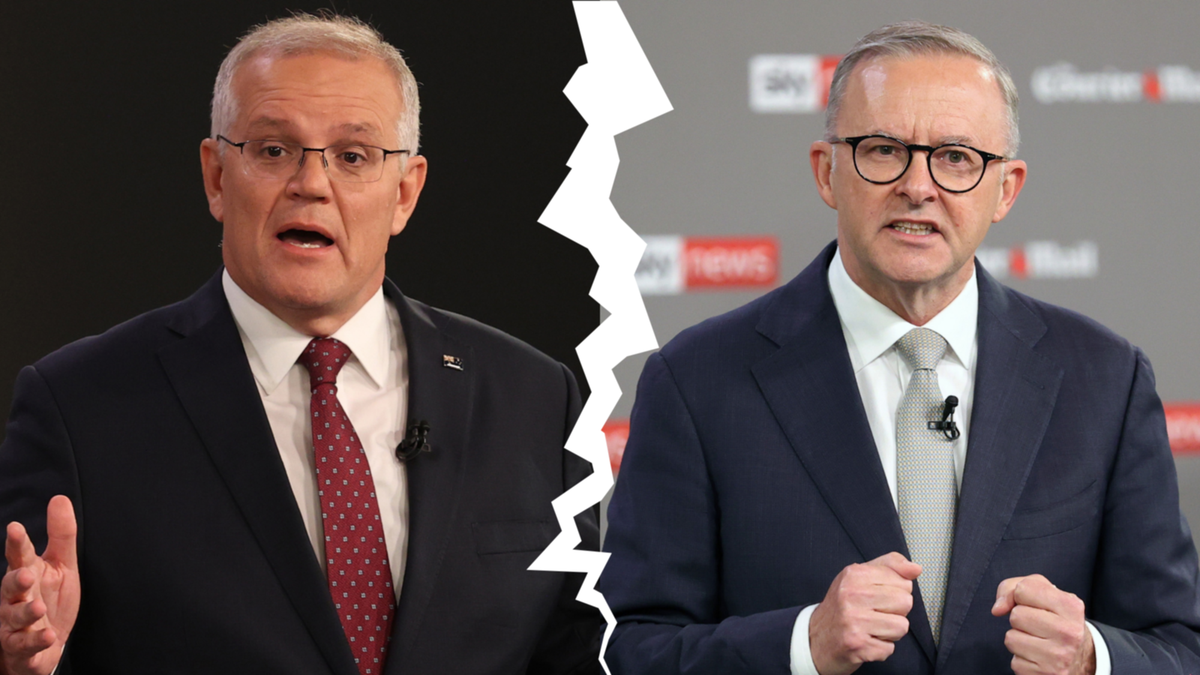When Australians head to the polls on May 21 to vote for the next prime minister, the youth vote will be well-represented.
According to the Australian Electoral Commission’s latest statistics, more than 85 per cent of under-24s have enrolled to vote.
Watch the video above: How Australia’s election process works
Watch the Federal Election 2022 on Channel 7 or stream it for free on 7plus >>
All up, more than 3 million people under the age of 30 are set to cast their vote this year.
But experts question whether the major political parties are doing enough to account for their vote.
More than 17 million people will vote on election day – some 3 million of those under the age of 30. Credit: RICHARD WAINWRIGHT/AAPIMAGEIntifar Chowdury has researched the impact of the youth vote at the Australian National University.
She says that millennial and Gen Z voters will have a “significant” impact on who the prime minister is after polls close.
“Young people in Australia – this is good news for us, really, compared to international trends – young people in Australia are actually engaging with politics,” she told 7NEWS.com.au.
“The way they engage, obviously, is a little bit different to older groups but what’s happening is a dramatic shift in how political information is being consumed and politically expressed.
“Things like TikTok and the AEC calling people to enrol are very good examples of how that radical shift is manifesting in our political culture.
“Yes, there will be an effect. But also, considering previous trends, young people will work together at the ballot box but a more important question really is how are they going to work? What issues (are they going to base their vote on) and are they going to vote for major parties?”
Young voters are set to significantly impact the election. Credit: MICK TSIKAS/AAPIMAGEShe said there were hundreds of issues that could sway younger voters – but pointed to four as being of note; climate action, education, housing affordability and the cost of living.
An Ipsos survey last month found 83 per cent of Australians polled were worried about climate change and global warming.
Seventy per cent responded the country was already in the grips of climate change, while 45 per cent said the federal government was doing “too little” to combat it.
Education, Chowdury noted, had not featured as a key topic for either major party.
“This definitely has been significantly impacted by COVID and lockdowns,” she said.
“Both secondary, primary and also tertiary education. In previous years, we’ve seen deregulation and price hikes for certain degrees over others.”
Housing headachesHousing affordability, she said, was an “elephant in the room”.
“Housing affordability has multiple facets to it and instantly, in our culture, when people think about it, we think about homeownership.
“And of course younger people and in the newest generation, be it late millennials or Gen Z, they probably won’t be able to own their house at the same point in time as their parents or grandparents. That is the reality.
“But I think an even more pressing issue is rental affordability.”
A new survey by Anglicare Australia of 45,992 rental listings shows the market is less affordable than ever.
Only 712 of the rental properties surveyed by Anglicare Australia, or 2 per cent, were affordable to Australians earning minimum wage.
Hip pocket painThe rising cost of living was detailed in full earlier this week when the Australian Bureau of Statistics released its quarterly inflation figures.
The annual inflation rate jumped to 5.1 per cent – the highest in more than 20 years – with high petrol prices and home construction costs the main culprits.
Labor Leader Anthony Albanese has leant heavily on cost of living during his campaign, saying wage growth wasn’t keeping up with inflation.
“The cost of living is increasing, but pay isn’t keeping up,” he said.
“A Labor government will focus on lifting pay and profits and creating even more jobs by making our economy more productive.”
Treasurer Josh Frydenberg meanwhile said there was no silver bullet for many of the issues facing the Australian economy, such as workforce shortages, but said the country’s finances were tracking well.
“The Australian economy has seen a remarkably strong recovery and the key indicator of that has been an unemployment rate of 4 per cent,” he told reporters.
“(Higher inflation) has been driven by international factors and that’s the cold-hard reality of the situation that we face.”
Australian Electoral Commission (AEC) employees organise boxes of information, ready for polling booths. Credit: MICK TSIKAS/AAPIMAGEEven the AEC acknowledges the importance of making voting accessible to younger Australians.
It measures the enrolment rate of people between the age of 18 to 24, setting a target in 2022 to have 85 per cent of that age group enrolled.
It reached that mark this year, with 85.4 per cent of the group enrolled for the May election.
AEC spokesman Evan Ekin-Smyth told 7NEWS.com.au a number of steps had been taken to encourage young people to enrol to vote, including implementing COVID-safe measures.
“People can feel safe about it and really enjoy voting, get a democracy sausage on the way out and, for young Australians having their first interaction with it, hopefully it’s a good one.”

